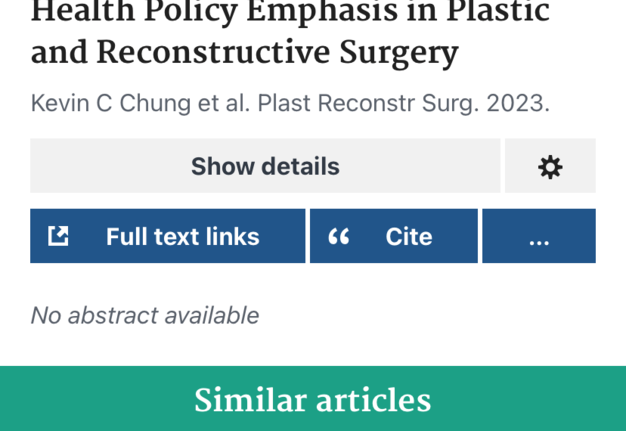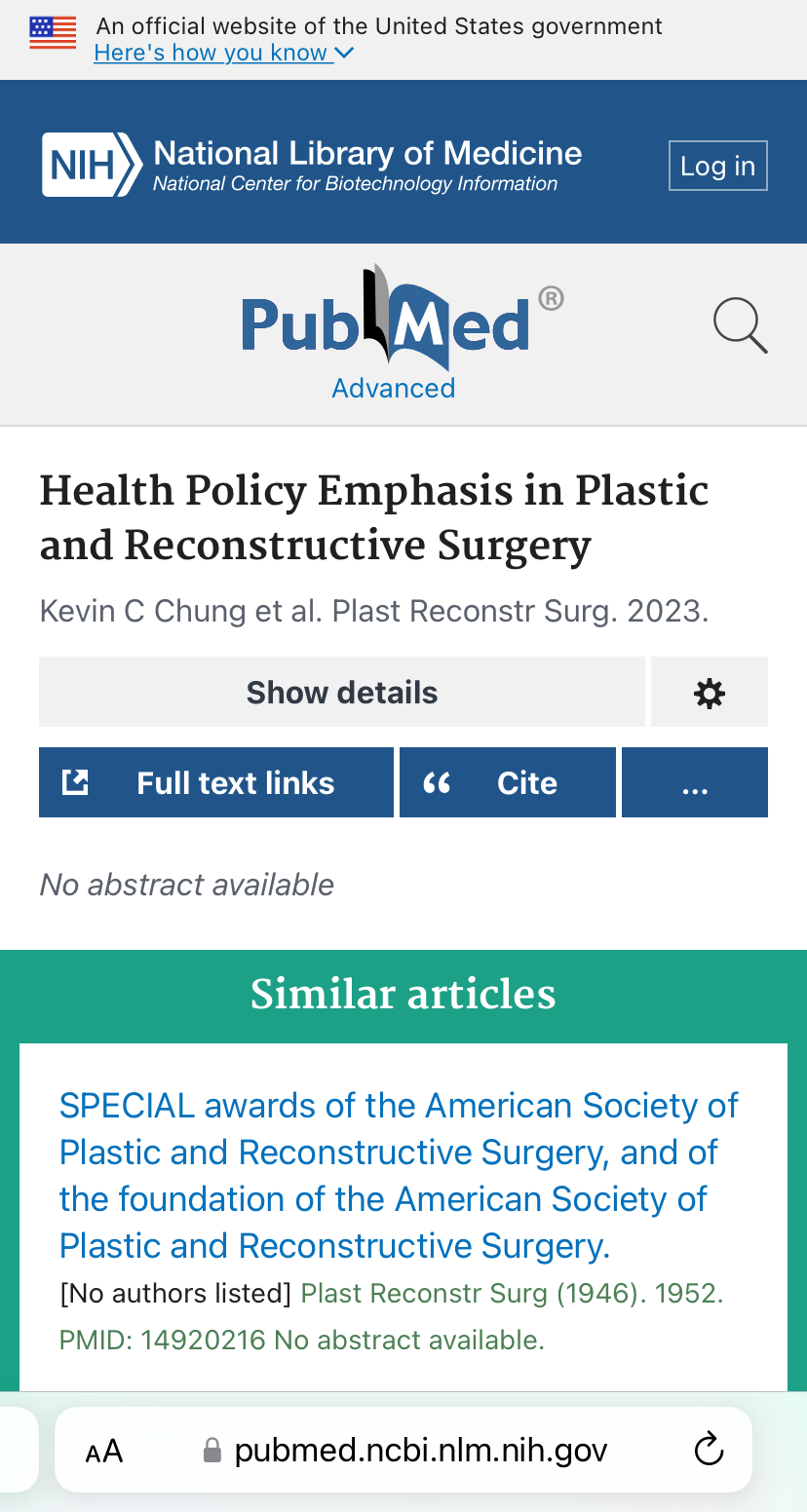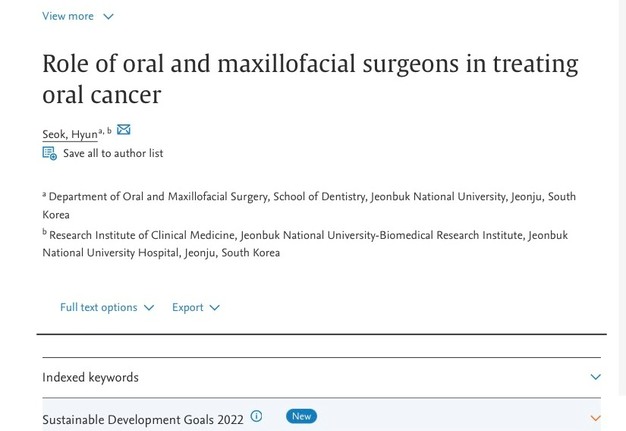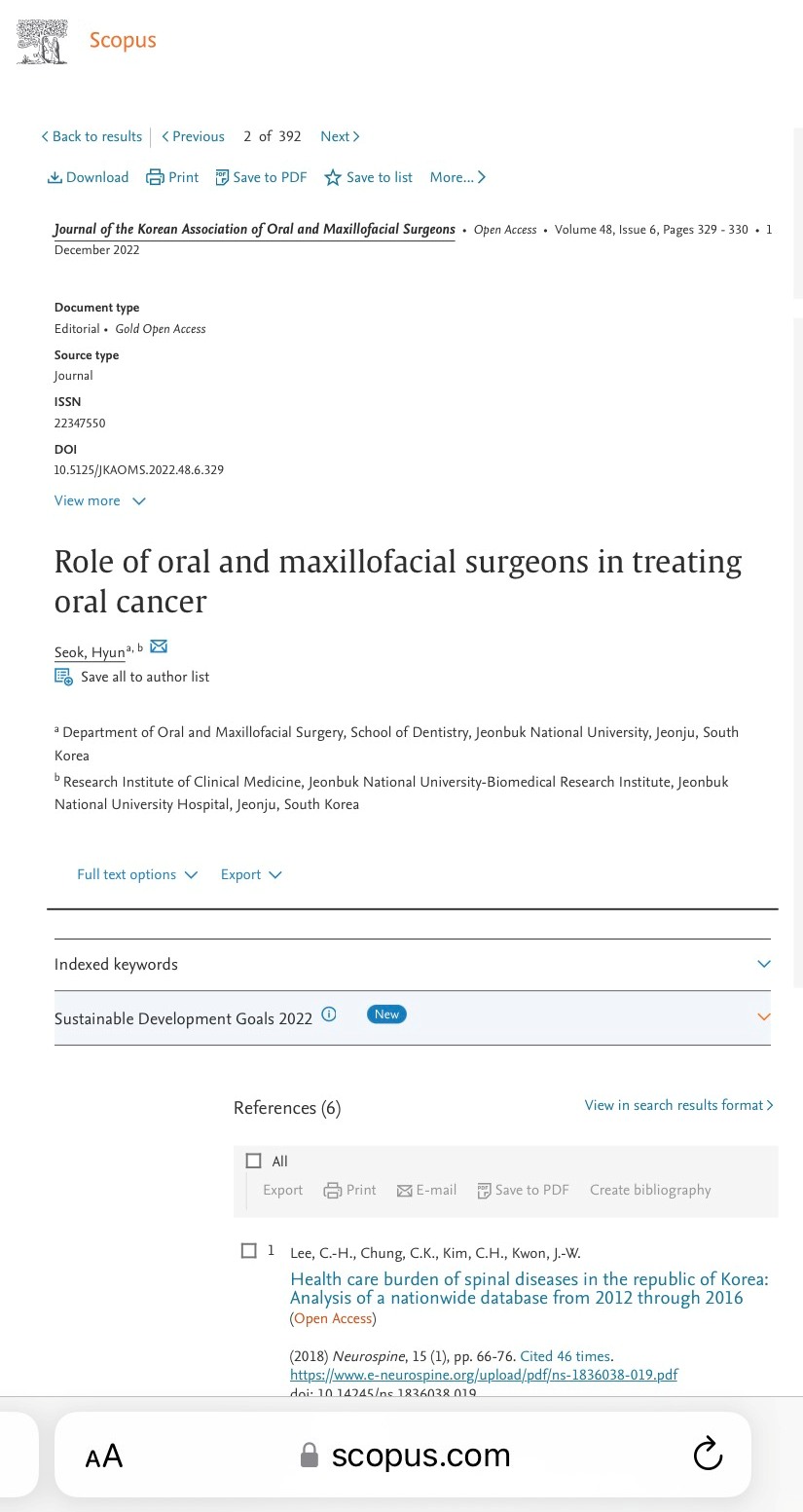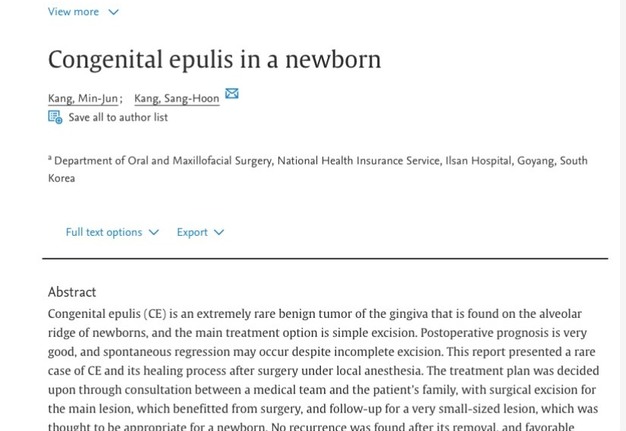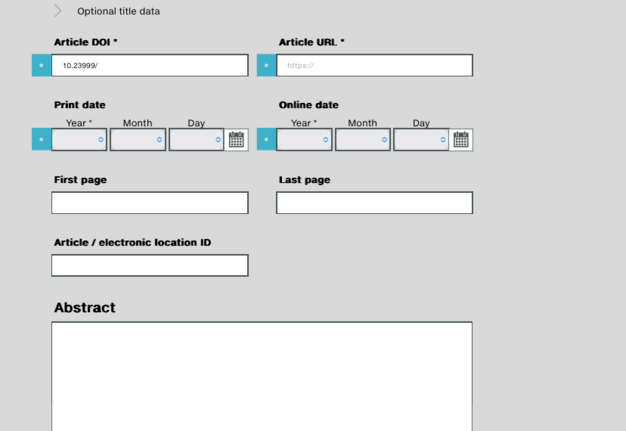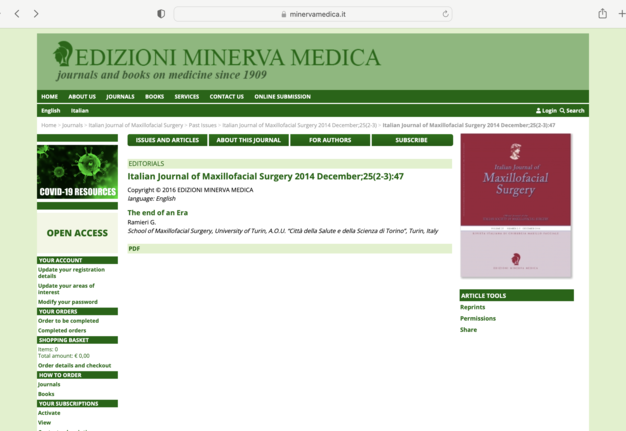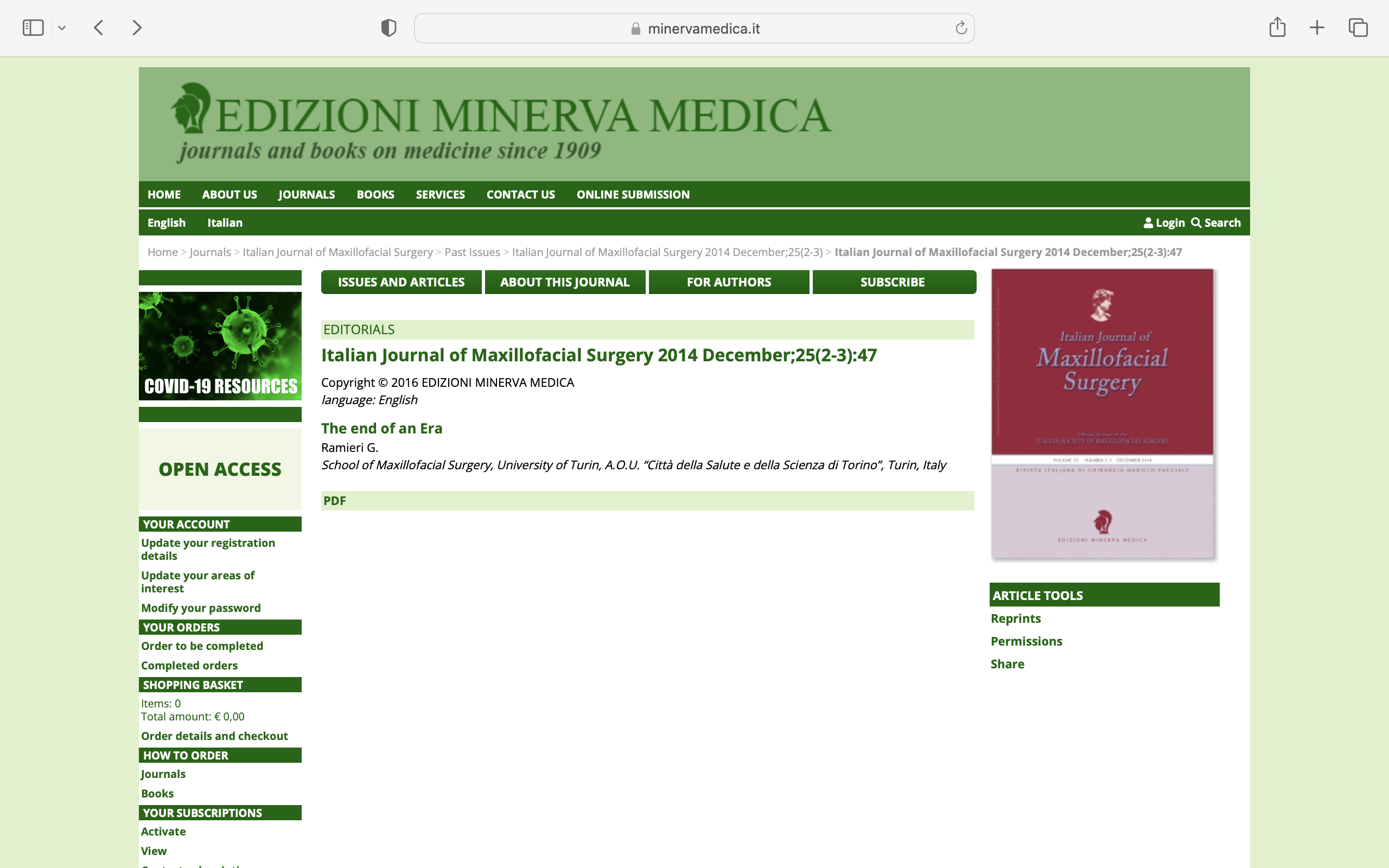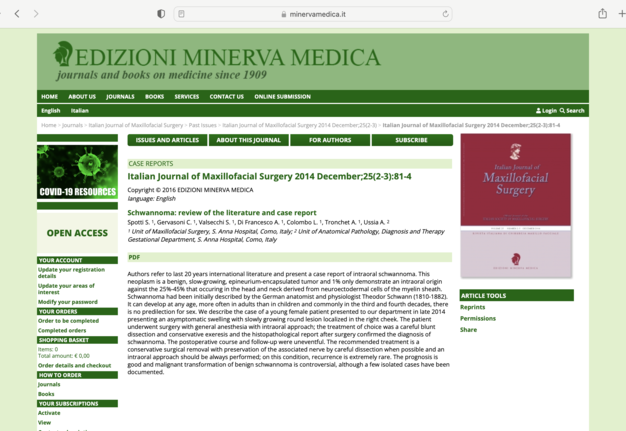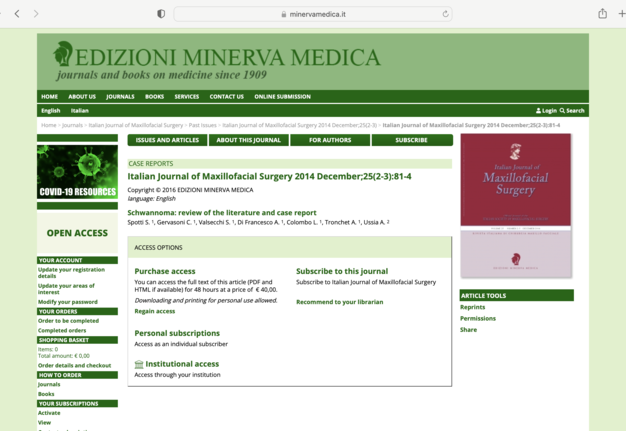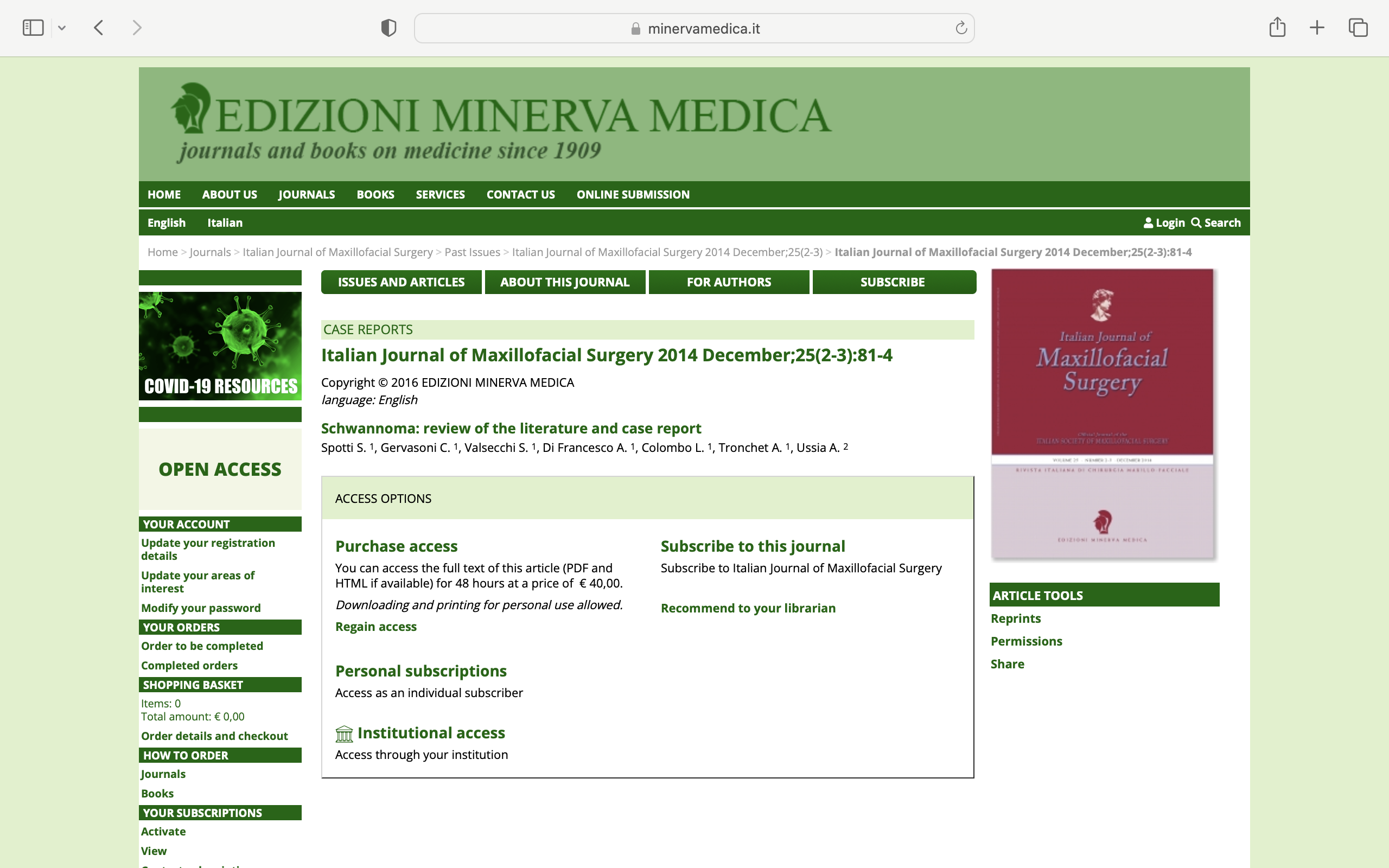May 31, 2023
J Diagn Treat Oral Maxillofac Pathol 2023;7: 39–50.
DOI: 10.23999/j.dtomp.2023.5.1
Under a Creative Commons license
HOW TO CITE THIS ARTICLE
Tymofieiev OO, Fesenko II. “No abstract available.” Maybe it’s a time to integrate abstracts into editorials? J Diagn Treat Oral Maxillofac Pathol 2023;7(5):39–50. https://doi.org/10.23999/j.dtomp.2023.5.1
NATIONAL REPOSITORY OF ACADEMIC TEXTS
https://nrat.ukrintei.ua/en/searchdoc/2023U000302/
INSTITUTIONAL REPOSITORY
https://ir.kmu.edu.ua/handle/123456789/317
ABSTRACT
Abstract of the peer-reviewed article is a short description of its main sections and simultaneously with the title is the most visible part of the paper. Articles of such types as case reports, case series, original research, review, essays, and many other types have their own abstract. Many, except of editorials. Considering the fact that as of 2023, the science unfortunately has been replaced by the pursuit of citations, the insufficient number of citations of editorial articles may be caused by the lack of an open abstract in them. We oppose discrimination of editorials. Editorial articles are permanently evolving and the number of editorials in which the number of pages reaches 9 is increasing. And an article with so many pages should have its own abstract. We demand that editorials be given the right to have their abstracts. The problem of the absence of an abstract in editorials is like a coin—it has two sides. On the one side, scientist, or editor of other journal, especially in the case of closed (i.e., paid) editorial, may not understand from the editorial title alone the details of what the article is about and whether this article can be useful in their research, practice, or editorial office work. On the other side, the article lacks visitors and, as a result, its authors do not receive dividends in the form of citations. Let’s not forget about the publishers, who in turn receive less revenue in the case of closed editorials, which in turn does not allow reinvesting in technological innovations of journals. In this editorial, we analyze and present the advantages of integrating abstracts into such an important type of article as editorial.
ARTICLE
After publication, the abstract is crucial for the success of your paper.1
—Daniela Ruffell (2018)
Abstract or summary is a primary source of the information for the reader about any peer-reviewed article. About any article, but not about editorials. Someone will say that this type of articles is too short to include the abstracts. And partly these opinions are seemingly true because some editorials have a sum of words comparable with that of a single abstract of a large research or review-type article. What actually happens is that the number of pages in editorial-type articles varies from one2 or even half of a page3 to nine4.
It doesn’t matter how many pages the editorial takes up, because it can contain extremely important data about the evolution/discontinuation/ceasing of the journal,5–10 specialty,11 pivotal decisions of the editorial board,12 summaries of the contents of this specific issue of the journal,13 and much more.
When the non-editorial article is paid to read, it still has the abstract and thus carries basic information for a potential reader, scientist and person who could cite this article in their works. The importance of the abstract is also confirmed by the fact that in the case of non-English-language articles, journals require authors to prepare a translation of the article title and abstract into English as a language of global science. And if there is no abstract in article like editorial, then a person cannot determine by just one title whether a scientist needs to pay for this paper or even just go to the journal’s website – that is, take additional steps and so be overloaded with the scientific work of academic workers.
The abstracts could be short, counting 57 words14 or even less (49 words)15 or long, counting 283 words16. An abstract is always a part of open information, no matter it belongs to an open access article or to an article with the possibility of access for payment. Editors are emphasizing that a good abstract explains the aims of the research, how these were met, and the main findings.17
The general consensus is that it [abstract] should be 200–300 words in length.18
—Ketcham and colleagues (2010)
Multiple papers describe how to prepare the perfect abstract to the different types of articles.18–23 Different, except of editorials. It is most interesting to see and read editorials about how to write the abstracts for research articles, and at the same time not have the abstracts in these editorials themselves.
In our opinion, the abstract in such articles as an editorial can have a couple of sentences. But all the same, it will be more extended and informative than just an article without any abstract.
Moreover, if the paid article does have an abstract and it has taken an interest of a scientist, this increases the probability that the scientist will pay a fee for accessing and downloading the article.
The abstract is the vehicle used to decide if the study is of sufficient interest to go to the effort of obtaining the full paper…23
—William E. Fisher (2005)
And more disappointing is when a database, like PubMed® (Fig 1)24 or Scopus® (Fig 2A),25 contains the title of the article, but neither its summary/abstract nor a direct link to the article itself26. Such cases disappoint the seeker and decrease the probability that reader will pay to read that closed paper. And articles with abstracts, like case reports, in same databases (Fig 2B) show how important to include the abstract to facilitate the researcher’s search.27,28
Crossref Metadata Manager has likewise an option to include an article’s abstract (Fig 3). Metadata Manager website demonstrates the textbox for abstract of each article which received such an important tool as a digital object identifier (DOI). This fact is another reason for integrating abstracts into editorial articles.
Figure 4 demonstrates the laptop screenshots from the website of the Italian Journal of Maxillofacial Surgery with the editorial article without abstract and a case report paper article with it.8,28 Unfortunately, the absence of the abstract completely camouflages the essence of the editorial as an article.
It is true that the work of some peer-review journals may follow the dictates of publishers and they may limit editors in the number of pages for editorials. However, editors should insist on any publishing and editorial steps that can increase the number of visits to the journal website and article citations.
We think that integration of abstracts to such articles as editorials will contribute to increasing the openness of information in various important databases.
Here is a list of the benefits of such integration:
-
Reduction of time to search for information.
-
Increasing the probability of citation.
-
Increasing the productivity of scientists.
-
It will help peer-reviewed journal to grow its revenue in case of receiving payment from readers for access to the articles.
Also, the integration of a abstracts may be appropriate in other abstractless articles, for example in the perspective-type articles.29
So, this is just a humble analysis. But it is possible that the editorial teams of the peer-reviewed journals will find our opinion interesting or even important for the development of the journals and surgical science. Anyway, starting this very issue of our open access Journal we are happy to make the editorials a more complete paper, initiating the tradition of publishing the editorials of all types (editorials, guest editorial, and postscript editorials) with abstracts.
Now, get writing that abstract!30
Social Sciences & Humanities Open > Policies and guidelines > How to write a great abstract for your academic manuscript (2020)
REFERENCES (30)
-
Ruffell D. Writing a great abstract: tips from an editor. FEBS Lett 2019;593(2):141–3. https://doi.org/10.1002/1873-3468.13304
-
Cheon JE. Ultrasonography: turning the corner. Ultrasonography 2023;42(1):1. https://doi.org/10.14366/usg.22209
-
Fernandes RP, Parmar S. New beginnings. Craniomaxillofac Trauma Reconstr 2023;16(1):3. https://doi.org/10.1177/19433875231153527
-
Rohrich RJ, Weinstein AG, Stuzin J. Plastic and Reconstructive Surgery at 75: stronger, better, and always changing. Plast Reconstr Surg 2021;147(1):249–57. https://doi.org/10.1097/prs.0000000000007516
-
Eliav E. QI continues to move forward. Quintessence Int 2023;54(1):4. https://doi.org/10.3290/j.qi.b3803631
-
Tymofieiev OO, Fesenko II, Kilipiris EG. Evolving: becoming a printable digital-only journal from January 2022. J Diagn Treat Oral Maxillofac Pathol 2021;5(12):137–8. https://doi.org/10.23999/j.dtomp.2021.12.2
-
Smith JA. ANZ Journal of Surgery: a farewell to print. ANZ J Surg 2021;91(12):2556–7. https://doi.org/10.1111/ans.17368
-
Ramieri G. The end of an era. Ital J Maxillofac Surg 2014;25(2–3):47.
-
Australian Prescriber Editorial Executive Committee. Farewell to print. Aust Prescr 2016;39(3):103–4. https://doi.org/10.18773/austprescr.2016.043
-
Haapasalo M. Farewell to Endodontic Topics. Endod Topics 2016;34(1):7. https://doi.org/10.1111/etp.12101
-
Tymofieiev OO, Ushko NO, Fesenko II, Cherniak OS. Maxillofacial surgery specialization in Ukraine: a new order and step in the growth of the specialty: analysis of qualification categories. J Diagn Treat Oral Maxillofac Pathol2021;5(4):43–51. https://doi.org/10.23999/j.dtomp.2021.4.3
-
Brkić H. 50th Anniversary of Acta stomatologica Croatica. Acta Stomatol Croat 2016;50(1):2–7. https://doi.org/10.15644%2Fasc50%2F1%2F1
-
González-Arriagada WA, Ottaviani G, Dean D, et al. Editorial: oral complications in cancer patients. Front Oral Health 2023;3:1116885. https://doi.org/10.3389/froh.2022.1116885
-
Frias V, Hsu L. Three-dimensionally printed facial prosthesis with a silicone veneer technique: a clinical report [published online ahead of print, 2023 Mar 23]. J Prosthet Dent 2023;S0022–3913(23)00119–1. https://doi.org/10.1016/j.prosdent.2023.01.036
-
Ang BWG, Lee YS, Lim GH. An unusual site for breast clip migration: a case report. Radiol Case Rep2023;18(7):2487–90. https://doi.org/10.1016/j.radcr.2023.04.007
-
Huang CC, Ko SF, Huang HY, et al. Epidermal cysts in the superficial soft tissue: sonographic features with an emphasis on the pseudotestis pattern. J Ultrasound Med 2011;30(1):11–7. https://doi.org/10.7863/jum.2011.30.1.11
-
Andrade C. How to write a good abstract for a scientific paper or conference presentation. Indian J Psychiatry2011;53(2):172–5. https://doi.org/10.4103%2F0019-5545.82558
-
Ketcham C, Hardy R, Rubin B, et al. What editors want in an abstract. Lab Invest 2010;90:4–5. https://doi.org/10.1038/labinvest.2009.122
-
Oermann MH. Editorial: writing the abstract of your manuscript. Nurse Author Editor 2014;24(1):1–3. https://doi.org/10.1111/j.1750-4910.2014.tb00175.x
-
Weissmann G. Writing science: the abstract is poetry, the paper is prose. FASEB J 2008;22(8):2601–4. https://doi.org/10.1096/fj.08-0801ufm
-
Winker MA. The need for concrete improvement in abstract quality. JAMA 1999;281(12):1129–30. https://doi.org/10.1001/jama.281.12.1129
-
Heseltine E. Writing an abstract: window to the world on your work. Aust N Z J Public Health 2012;36(3):204–5. https://doi.org/10.1111/j.1753-6405.2012.00865.x
-
Fisher WE. Abstract writing. J Surg Res 2005;128(2):162–4. https://doi.org/10.1016/j.jss.2005.07.007
-
Chung KC, Fahmy JN, Colwell AS. Health policy emphasis in Plastic and Reconstructive Surgery. Plast Reconstr Surg 2023;151(3):463–5. https://doi.org/10.1097/PRS.0000000000009973
-
Seok H. Role of oral and maxillofacial surgeons in treating oral cancer. J Korean Assoc Oral Maxillofac Surg2022;48(6):329–30. https://doi.org/10.5125/jkaoms.2022.48.6.329
-
PubMed®: New Zealand Dental Journal. Seventy-fifth jubilee issue. N Z Dent J 1980;76(345):107–48. https://pubmed.ncbi.nlm.nih.gov/7003447/
-
Kang MJ, Kang SH. Congenital epulis in a newborn. J Korean Assoc Oral Maxillofac Surg 2022;48(6):382–5. https://doi.org/10.5125%2Fjkaoms.2022.48.6.382
-
Spotti S, Gervasoni C, Valsecchi S, et al. Schwannoma: review of the literature and case report. Ital J Maxillofac Surg 2014;25(2–3):81–4.
-
Li AYZ, Giannakopoulos HE, Panchal NH, Ford BP. Is the comprehensive basic science examination still useful in the oral and maxillofacial surgery residency application process? J Oral Maxillofac Surg 2023;81(1):5–7. https://doi.org/10.1016/j.joms.2022.10.013
-
Social Sciences & Humanities Open: policies and guidelines: how to write a great abstract for your academic manuscript [document on the internet]; Sep 2020 [сited 07 May 2023]. Available from: Link
